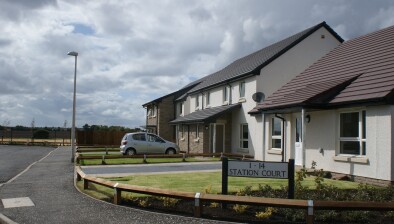East Lothian Council approves new homelessness strategy
 A key plan aimed at continuing East Lothian Council’s success at tackling homelessness throughout the region has been approved by councillors.
A key plan aimed at continuing East Lothian Council’s success at tackling homelessness throughout the region has been approved by councillors.
Presented to the meeting of the cabinet this week, the Homelessness Action Plan outlines a wide range of measures that will allow the council to build on its successes and tackle homelessness, including:
The Homelessness Action Plan noted the success of the council’s homelessness prevention approach, which has resulted in the number of people presenting as homeless reducing since 2012. The report also noted that the council had increased the provision of temporary accommodation by around 45% since 2012, ensuring that where homelessness has been unavoidable, the council has been able to provide temporary accommodation in accordance with its statutory duties.
A number of key challenges were identified including:
It was also noted that not only has the full roll out of Universal Credit significantly reduced the housing opportunities available to homeless clients, but it has had a significant financial impact on the collection of income from these clients, which is impacting adversely on the council’s general services budget which funds homelessness services.
Councillor Jim Goodfellow, cabinet spokesperson for housing and community wellbeing, said: “Despite our achievements, the council continues to face significant challenges. Unfortunately, the number of people making homeless applications to the council appears to be increasing, and despite the increase in temporary accommodation, the level of demand is such that the council remains dependent on the use B and Bs to meet this, particularly in emergency cases. Unless action is taken to improve the throughput for those using temporary accommodation, it is likely that the council will be unable to meet its legal obligation to move a family on from a B and B within the 7 day limit.
“This new Homelessness Action plan not only tackles these key pressures and will ensure that the council can meet its statutory obligations, but it aims to do better for families experiencing homelessness. Supporting tenants before they reach a crisis point is absolutely crucial, but in cases where homelessness has become unavoidable, this plan recognises the disruption that living in temporary accommodation can do to families. It’s important that we do everything we can to ensure that families don’t need to move more than they need to, so that their ties to the local community are not broken.”







